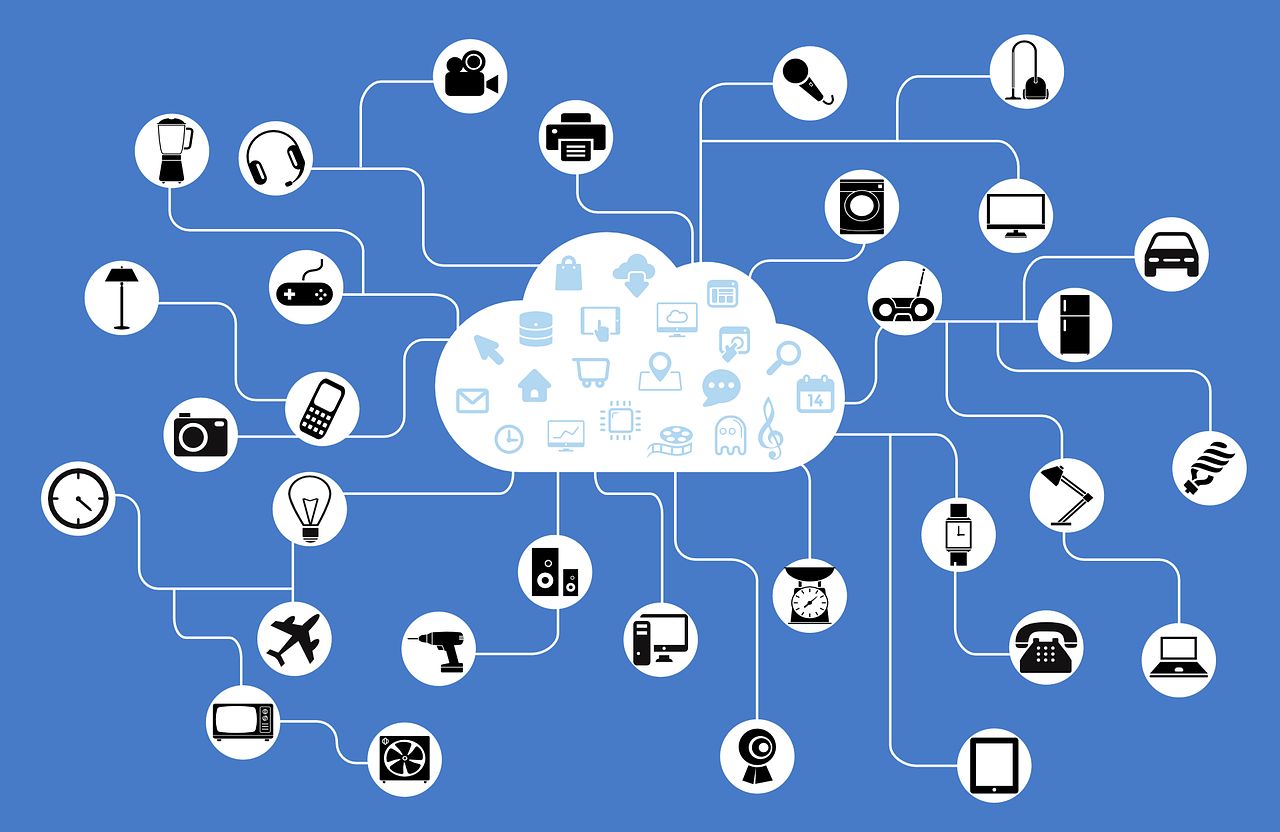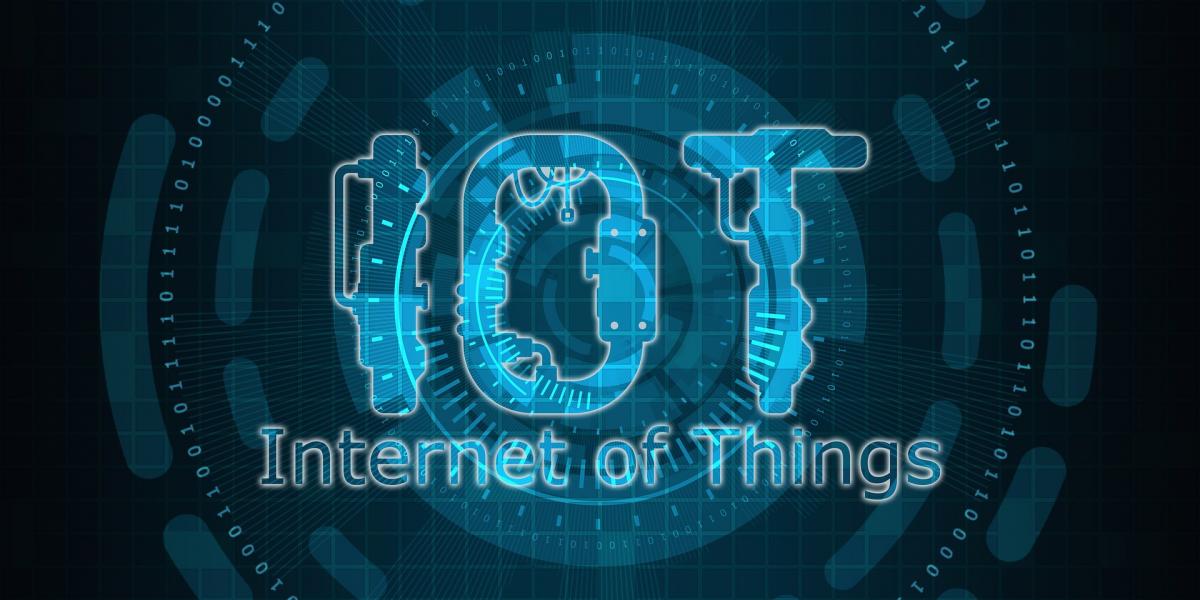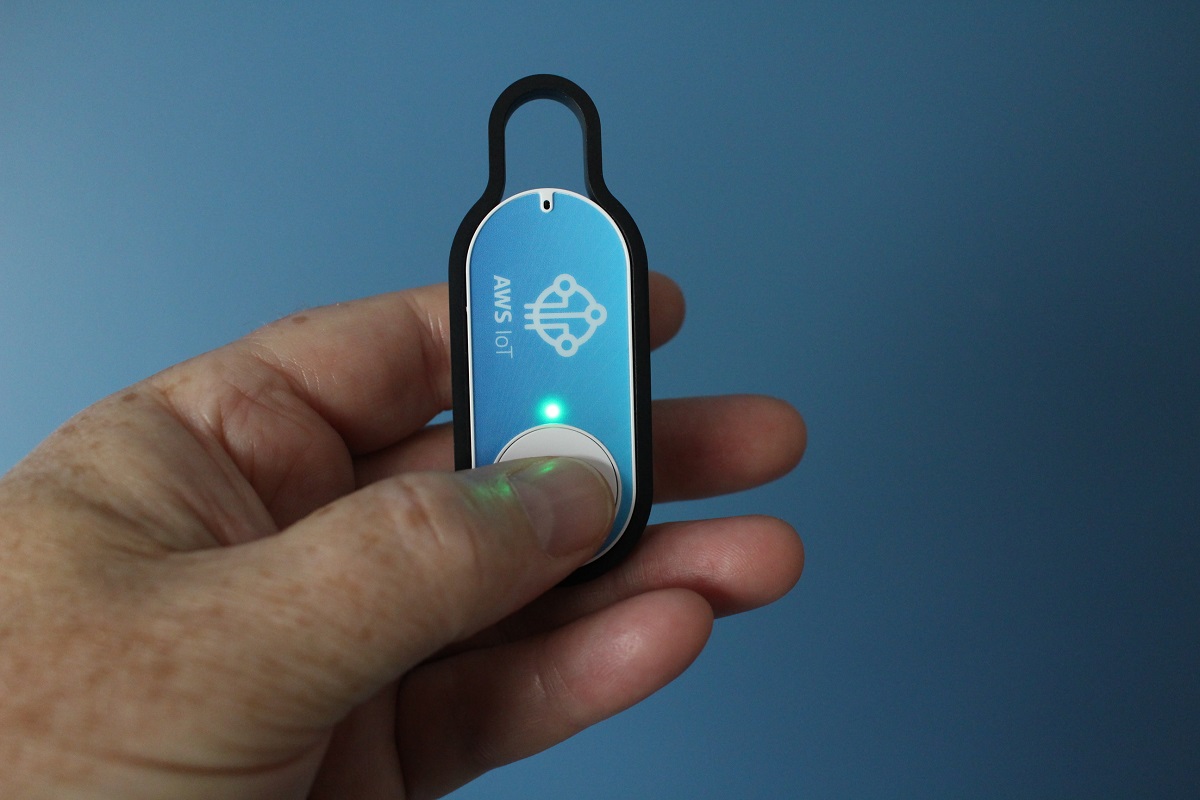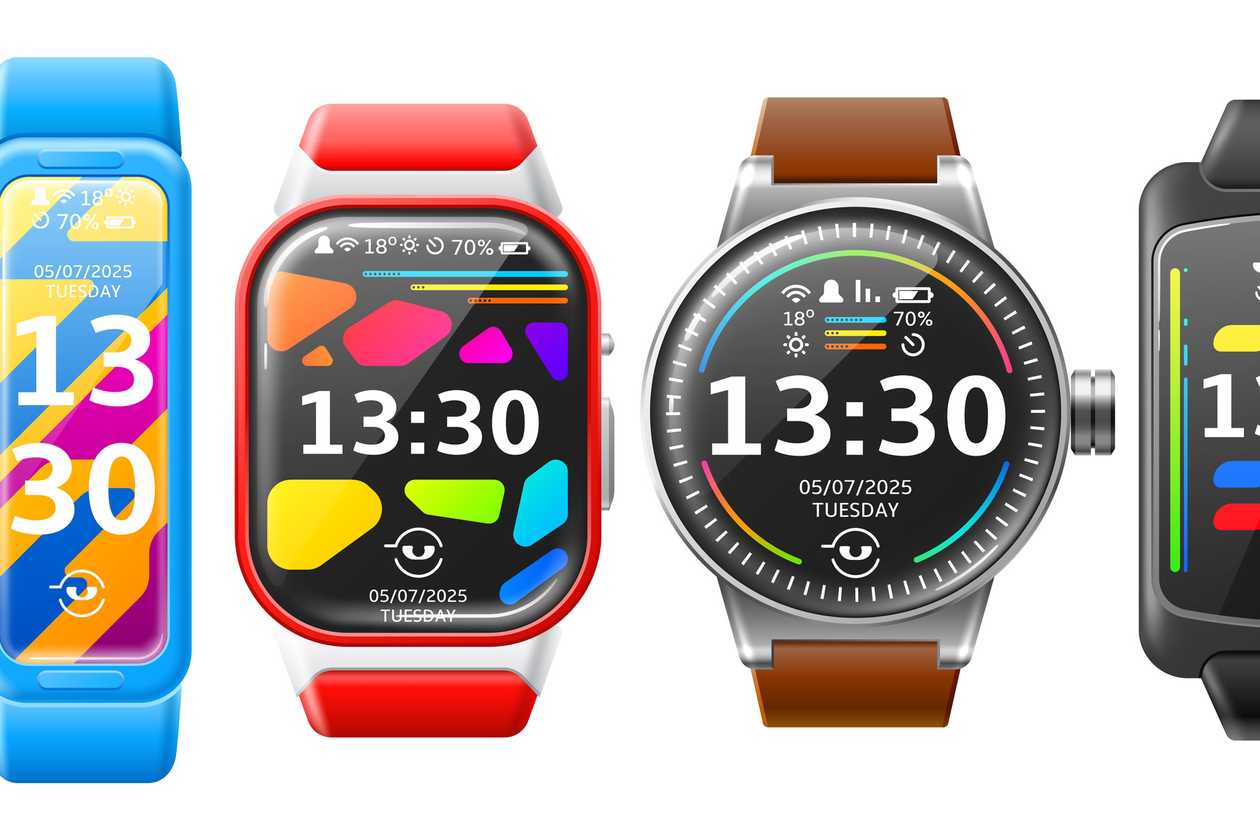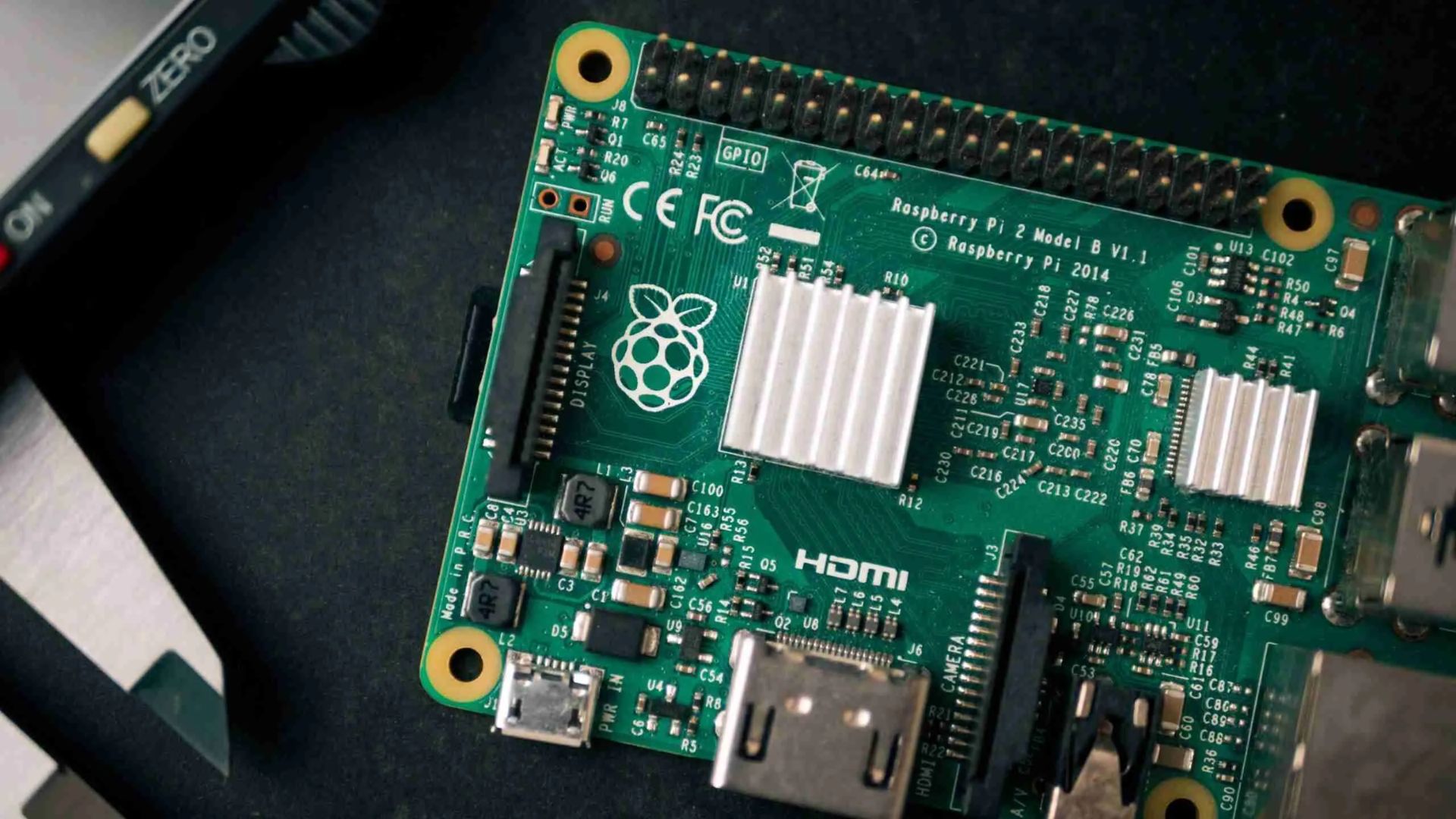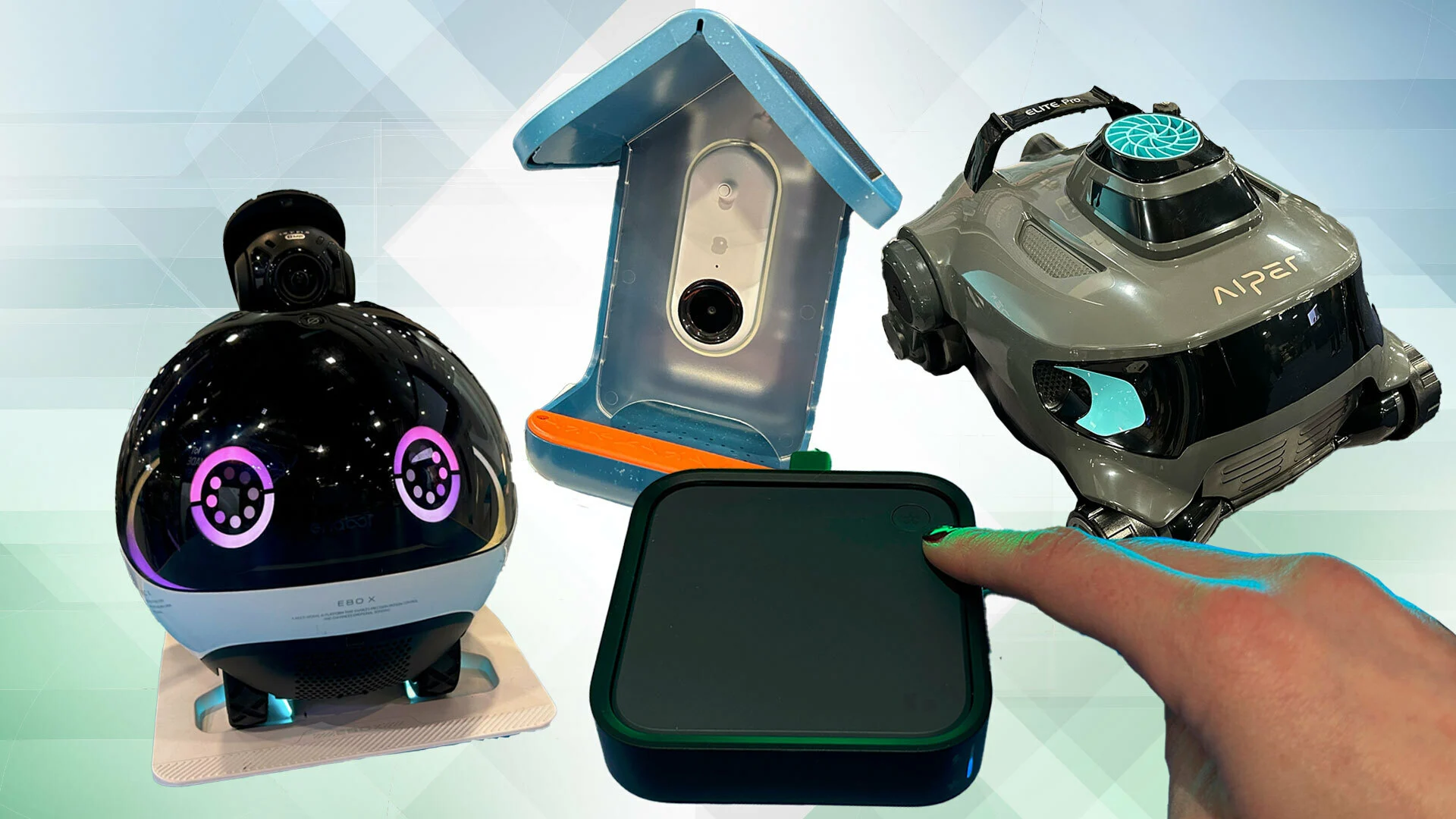Introduction
The Internet of Things (IoT) is revolutionizing the way we interact with everyday objects, making them smarter and more interconnected than ever before. From our homes to our workplaces, IoT devices are becoming increasingly prevalent, transforming both our personal lives and industries on a global scale.
At its core, IoT refers to the network of physical devices that are embedded with sensors, software, and connectivity, enabling them to collect and exchange data over the internet. This network allows devices to communicate with each other and with humans, creating an ecosystem that seamlessly integrates the digital and physical worlds.
The concept of IoT has gained significant momentum in recent years as advancements in technology have made it more feasible and affordable to implement. The idea of connecting various devices and systems to enhance efficiency, productivity, and convenience has captured the imagination of individuals, businesses, and governments alike.
Imagine being able to control your home’s lighting, temperature, and security system from your smartphone or receiving real-time updates about the freshness of perishable items in your fridge. IoT is making these scenarios a reality, making our lives more interconnected, efficient, and comfortable.
IoT technology extends far beyond our homes. In industries such as manufacturing, healthcare, agriculture, transportation, and energy, IoT devices are revolutionizing processes, automating tasks, and optimizing efficiency. For instance, factories can utilize IoT sensors to monitor equipment performance, detect anomalies, and schedule maintenance, thereby reducing downtime and increasing productivity.
As the number of IoT devices continues to grow, so does the potential for transformative impact. According to estimates, the number of connected devices worldwide is expected to reach 75 billion by 2025, further accelerating the integration of IoT into various aspects of our lives.
While the possibilities of IoT are vast, it is crucial to navigate the challenges and considerations associated with this technology. Security, privacy, interoperability, and scalability are some of the key concerns that must be addressed to ensure a safe and sustainable IoT ecosystem.
In the following sections, we will delve deeper into the definition of IoT, explore how it works, examine real-world examples of IoT devices, discuss its advantages and challenges, delve into security concerns, and speculate on the future of IoT.
Definition of IoT
The Internet of Things (IoT) is a term that describes the network of physical devices embedded with sensors, software, and connectivity, enabling them to collect and exchange data over the internet. These devices can range from everyday objects such as smartphones, thermostats, and wearable fitness trackers to more complex systems like smart cities, industrial machinery, and autonomous vehicles.
IoT relies on a combination of hardware, including sensors and actuators, and software, including embedded systems and cloud computing, to enable communication between devices and the collection and analysis of data. The data collected by IoT devices can be automatically transmitted, analyzed, and used to make informed decisions, automate tasks, and improve efficiency.
What sets IoT apart from traditional computer networks is its ability to seamlessly integrate the physical and digital worlds. By connecting various devices and systems, IoT enables the exchange of information and the ability to remotely control and monitor devices, leading to greater convenience, efficiency, and productivity.
IoT devices typically operate within a larger system or ecosystem, where they interact and collaborate with each other, oftentimes without the need for human intervention. This enables autonomous decision-making and the creation of smart environments that adapt and respond to changing conditions.
Furthermore, IoT devices can be equipped with sensors to collect data about their environment, such as temperature, humidity, and motion. This data can be analyzed in real time or stored for future analysis, providing valuable insights for businesses and individuals.
Overall, the IoT represents a paradigm shift in how we interact with the world around us. It enables the creation of intelligent and interconnected environments where devices and systems work harmoniously to improve our quality of life, enhance productivity, and drive innovation across industries.
How IoT Works
IoT operates through a complex network that connects a wide range of devices and systems, enabling them to communicate, share data, and perform tasks autonomously. Understanding how IoT works involves delving into the key components and processes that make this technology possible.
1. Sensors and Actuators: IoT devices are equipped with sensors that gather information about their surroundings. These sensors can detect various parameters such as temperature, pressure, proximity, light, and motion. Actuators, on the other hand, are responsible for carrying out physical actions in response to commands received from the network.
2. Connectivity: IoT devices rely on different communication protocols and technologies to connect and share data with each other. This can include Wi-Fi, Bluetooth, cellular networks, Zigbee, or even satellite communication. The choice of connectivity depends on the specific requirements of the application.
3. Networking: Once connected, IoT devices form a network that enables them to communicate and exchange data. This can be done through local area networks (LANs), wide area networks (WANs), or even through the internet. Cloud platforms and edge computing technologies play a crucial role in handling the vast amount of data generated by IoT devices.
4. Data Collection and Processing: IoT devices generate a massive amount of data through their sensors. This data needs to be collected, processed, and analyzed to extract meaningful insights. Cloud computing platforms and edge devices perform data storage, analysis, and visualization, enabling real-time monitoring and decision-making.
5. Automation and Control: IoT enables automation and control by allowing devices to interact and perform tasks without direct human intervention. For example, a smart thermostat can automatically adjust the temperature based on occupancy and weather conditions, or a smart irrigation system can monitor soil moisture levels and water plants accordingly.
6. Machine Learning and Artificial Intelligence: The use of machine learning and artificial intelligence (AI) algorithms plays a crucial role in IoT. These technologies enable devices to learn from patterns in the data, make predictions, and improve their performance over time. This opens up new possibilities for predictive maintenance, anomaly detection, and optimization.
Overall, the functionality of IoT devices depends on the integration of various components and technologies. By combining sensors, connectivity, networking, and intelligent algorithms, IoT creates a powerful ecosystem that drives automation, enhances efficiency, and improves decision-making across a wide range of industries and applications.
Examples of IoT Devices
The Internet of Things (IoT) has brought forth a myriad of innovative devices that have infiltrated our daily lives, transforming the way we interact with technology. Here are some notable examples of IoT devices across different domains:
1. Smart Home Devices: Devices such as smart thermostats, lighting systems, and security cameras allow homeowners to control and monitor their homes remotely. Voice-activated virtual assistants like Amazon Echo and Google Home enable voice commands to control various IoT devices.
2. Wearable Devices: Fitness trackers, smartwatches, and health monitoring devices are IoT-powered wearable devices that track users’ physical activity, heart rate, sleep patterns, and more. They provide users with real-time insights and personalized recommendations for leading a healthy lifestyle.
3. Smart Appliances: IoT-enabled appliances like refrigerators, washing machines, and ovens are equipped with sensors that can monitor and adjust settings based on usage patterns. They can also send notifications to users regarding maintenance, energy consumption, and food spoilage.
4. Connected Cars: Modern vehicles come with IoT capabilities that offer features such as GPS navigation, real-time traffic updates, remote vehicle control, automated emergency services, and vehicle diagnostics. Connected cars enhance driver safety, improve fuel efficiency, and provide a seamless driving experience.
5. Industrial IoT (IIoT) Devices: Industries utilize IoT devices to enhance operational efficiency, optimize supply chains, and monitor equipment performance. For example, sensors embedded in machinery can collect data for predictive maintenance, ensuring minimal downtime and improved productivity.
6. Smart Agriculture: IoT devices are deployed in agriculture to monitor and automate irrigation systems, track soil moisture levels, analyze weather patterns, and manage livestock. This helps farmers to optimize water usage, increase crop yield, and make data-driven decisions for farming practices.
7. Healthcare Monitoring: IoT is transforming the healthcare industry with devices like remote patient monitoring systems, smart pills, and wearable health trackers. These devices continuously monitor patient vitals, medication adherence, and provide immediate alerts in case of emergencies.
8. Smart Cities: IoT is instrumental in creating smart cities by using connected devices to manage traffic flow, optimize energy consumption, improve waste management, enhance public safety, and provide efficient urban services.
These examples represent just a fraction of the vast range of IoT devices available today. As technology continues to advance and connectivity becomes more pervasive, we can expect even more innovative and diverse IoT devices that will further revolutionize the way we live and interact with the world around us.
Advantages of IoT
The Internet of Things (IoT) offers numerous benefits that have the potential to transform industries, enhance daily life, and drive innovation. Here are some of the key advantages of IoT:
1. Improved Efficiency and Productivity: IoT devices automate and streamline processes, leading to increased efficiency and productivity. For example, IoT-enabled sensors in manufacturing plants can monitor equipment performance, predict maintenance needs, and optimize production schedules, reducing downtime and improving overall productivity.
2. Enhanced Convenience and Comfort: IoT devices provide convenience and comfort in various ways. Smart home devices allow homeowners to control lighting, temperature, and security systems remotely. Voice-activated virtual assistants make it easier to perform tasks through simple voice commands, making daily life more convenient.
3. Cost Savings: IoT can result in cost savings for businesses and individuals alike. For businesses, IoT enables predictive maintenance, reducing unexpected equipment breakdowns and associated repair costs. For individuals, IoT-powered energy management systems help optimize energy usage, leading to reduced utility bills.
4. Improved Decision-Making: IoT devices generate vast amounts of data that can be analyzed in real time to extract valuable insights. This data-driven decision-making enables businesses to make informed choices, optimize operations, and adapt to changing market conditions.
5. Advanced Healthcare: IoT is revolutionizing healthcare by enabling remote patient monitoring, personalized care, and real-time tracking of vital signs. This technology improves patient outcomes, allows for early intervention, and reduces hospital readmissions, while also empowering individuals to take control of their own health.
6. Environmental Sustainability: IoT devices help promote sustainability by optimizing resource usage. Smart grids can manage energy distribution more efficiently, while smart agriculture systems minimize water wastage and reduce the use of pesticides, ultimately supporting a greener and more sustainable planet.
7. Improved Safety and Security: IoT plays a crucial role in enhancing safety and security. Smart security systems provide real-time monitoring of premises and immediate alerts in case of unauthorized access. IoT-enabled wearable devices offer safety features like panic buttons and location tracking, ensuring the well-being of individuals.
8. New Business Opportunities: The proliferation of IoT creates new business opportunities across various industries. From developing innovative IoT devices to offering specialized IoT services and solutions, businesses can tap into this emerging market with vast potential for growth and profitability.
As IoT continues to evolve and expand, its advantages will shape a more connected and intelligent world, leading to improved efficiency, greater convenience, and innovative solutions across industries and domains.
Challenges of IoT
While the Internet of Things (IoT) offers immense potential, it also presents a set of challenges that need to be addressed for its widespread adoption and success. Here are some of the key challenges of IoT:
1. Security and Privacy: With the increasing number of connected devices, IoT introduces new security risks. Malicious actors can exploit vulnerabilities in devices, potentially leading to data breaches, unauthorized access, and privacy infringement. Safeguarding IoT systems requires robust security measures, encrypted communication, and regular software updates.
2. Interoperability: IoT devices come from different manufacturers and use various communication protocols, resulting in compatibility issues. Interoperability challenges make it difficult for devices to communicate and collaborate seamlessly, hindering the integration and scalability of IoT solutions.
3. Data Management and Analytics: IoT generates massive volumes of data that need to be processed, stored, and analyzed in real time. Handling such large-scale data poses challenges in terms of storage capacity, computational power, and data analysis capabilities. Extracting meaningful insights from IoT data requires advanced analytics techniques and efficient data management strategies.
4. Scalability: As the number of connected devices increases, scalability becomes a significant concern. IoT systems must be designed to handle the growing number of devices, manage data traffic, and ensure reliable connectivity. Otherwise, scalability limitations can hinder the effectiveness and efficiency of IoT deployments.
5. Reliability and Quality of Service: Reliable connectivity is vital for IoT applications, especially those that operate in mission-critical environments. Network outages or disruptions can impact the functioning of IoT devices and result in service degradation. Ensuring consistent and reliable quality of service is crucial for the success of IoT systems.
6. Regulatory and Legal Framework: IoT introduces complex legal and regulatory challenges related to data protection, privacy, and liability. As IoT devices collect and transmit sensitive user data, regulations need to be in place to protect individuals’ privacy rights and address potential legal implications in case of system failures or data breaches.
7. Power Consumption and Energy Efficiency: IoT devices rely on batteries or power sources, and their continuous operation can drain energy quickly. Power consumption and energy efficiency must be optimized to prolong the device’s battery life or explore alternative energy sources to ensure sustainable and long-lasting IoT deployments.
8. Ethical Considerations: IoT raises ethical questions related to the collection and use of personal data, as well as potential biases in algorithms and decision-making processes. Balancing technological advancement with ethical considerations is crucial to ensure that IoT benefits society without causing harm or discrimination.
Addressing these challenges requires collaboration among stakeholders, including device manufacturers, service providers, regulatory bodies, and consumers. By acknowledging and actively mitigating these challenges, IoT can reach its full potential while ensuring security, privacy, and sustainability.
Security Concerns with IoT
The rapid growth of the Internet of Things (IoT) has brought about an increased focus on security as connected devices become more prevalent in our daily lives. IoT presents several security concerns that need to be addressed to ensure the protection of data, devices, and user privacy. Here are some of the key security challenges associated with IoT:
1. Device Vulnerabilities: IoT devices often have limited computing power and storage capabilities, making it challenging to implement strong security measures. This lack of robust security features makes devices susceptible to malware, hacking, and unauthorized access.
2. Insufficient Authentication and Authorization: Weak authentication mechanisms can allow unauthorized individuals to gain access to IoT devices or networks. Inadequate authentication practices, such as default or easily guessable passwords, can leave devices vulnerable to exploitation.
3. Data Privacy: IoT devices collect vast amounts of personal data, raising concerns about data privacy. If not adequately protected, this data can be vulnerable to unauthorized access, leading to privacy breaches or identity theft.
4. Network Vulnerabilities: The interconnectedness of IoT devices means that a breach in one device can potentially compromise the entire network. Inadequately secured network communication can result in eavesdropping, data manipulation, or unauthorized control over devices.
5. Secure Software Development Lifecycle: Development practices within the IoT landscape sometimes prioritize time-to-market over security. As a result, vulnerabilities may go unnoticed, or security patches may not be implemented promptly, leaving IoT devices exposed to attacks.
6. Supply Chain Security: The complex supply chain involved in the production and distribution of IoT devices introduces potential vulnerabilities. Malicious actors can exploit weaknesses in the supply chain to tamper with devices, inject malware, or compromise their integrity.
7. Overreliance on Third-Party Services: Many IoT solutions rely on third-party services and platforms for cloud storage, data analytics, or device management. The security of these services becomes critical as any security breach in the third-party infrastructure can potentially impact the entire IoT ecosystem.
8. Lack of Standardization: The absence of unified security standards in the IoT field makes it challenging to ensure consistent security practices across devices and platforms. This lack of standardization can lead to fragmentation and inconsistent security implementations.
To address these security concerns, multiple measures must be implemented. These include strong device authentication, encryption of data in transit and at rest, regular security updates and patches, monitoring network traffic for anomalies, implementing access controls, and educating users about best security practices.
Additionally, collaboration between manufacturers, policymakers, and security experts is essential to establish robust security frameworks, develop industry standards, and promote a culture of security awareness. By addressing these security concerns proactively, we can build a secure and resilient IoT ecosystem that safeguards our data, devices, and privacy.
Future of IoT
The future of the Internet of Things (IoT) holds tremendous possibilities as the technology continues to evolve and mature. Here are some key trends and developments that indicate the promising future of IoT:
1. Massive Growth: The number of connected devices is projected to surge in the coming years. By 2025, it is estimated that there will be tens of billions of IoT devices worldwide, further expanding the reach and impact of IoT across various industries and domains.
2. 5G Networks: The deployment of 5G networks will play a transformative role in the IoT landscape. 5G offers faster speeds, lower latency, and higher capacity, enabling seamless connectivity for IoT devices and supporting the implementation of real-time applications and services.
3. Edge Computing: Edge computing brings processing and storage capabilities closer to IoT devices, reducing latency and enhancing real-time data processing and analysis. This facilitates faster decision-making, improves operational efficiency, and enables IoT applications that require immediate response times.
4. Artificial Intelligence (AI) and Machine Learning (ML): AI and ML technologies are becoming increasingly integrated with IoT, enabling devices to make intelligent decisions and automate processes based on data analysis. This fusion of IoT and AI/ML will pave the way for advanced applications such as predictive maintenance, anomaly detection, and personalized user experiences.
5. Industry-Specific Implementations: IoT is rapidly expanding its footprint across industries, including healthcare, agriculture, manufacturing, transportation, and energy. Industry-specific implementations are driving innovation, improving efficiency, and revolutionizing traditional practices, leading to substantial cost savings and improved outcomes.
6. Smart Cities: The concept of smart cities is gaining momentum, with IoT playing a central role in creating sustainable and efficient urban environments. IoT-powered technologies will enhance traffic management, optimize energy consumption, improve public safety, and enable effective urban services.
7. Ecosystem Collaboration: Collaboration among various stakeholders is crucial for the future of IoT. Manufacturers, service providers, policymakers, and standards organizations need to work together to address challenges, ensure interoperability, establish robust security frameworks, and drive the adoption of unified IoT standards.
8. Ethical and Social Implications: As IoT becomes more pervasive, society will face ethical and social implications. Issues related to privacy, data security, data ownership, and algorithmic bias will need to be addressed to build trust and ensure a fair and equitable IoT ecosystem.
The future of IoT is boundless, with innovations and advancements promising to transform industries, enhance quality of life, and promote sustainable development. However, it is essential to navigate the challenges and ethical considerations associated with IoT to realize its full potential in a secure and responsible manner.
Conclusion
The Internet of Things (IoT) has emerged as a powerful force that is reshaping our world, connecting devices, and integrating the digital and physical realms. IoT offers numerous advantages, including improved efficiency, enhanced convenience, cost savings, and advanced decision-making capabilities. Industries and domains such as healthcare, agriculture, manufacturing, and smart cities are experiencing transformative changes through IoT applications.
However, along with its opportunities, IoT also presents challenges that must be addressed. Security concerns, interoperability issues, data management, scalability, and regulatory frameworks all require attention to ensure a secure and sustainable IoT ecosystem.
Looking ahead, the future of IoT holds immense promise. The proliferation of connected devices, the advent of 5G networks, advancements in edge computing and artificial intelligence, and the collaborative efforts of stakeholders will shape the future trajectory of IoT.
In this fast-growing landscape, it is crucial to foster collaboration, establish industry standards, improve security measures, and prioritize ethical considerations. By doing so, we can unlock the full potential of IoT, creating a smarter, more connected world that benefits individuals, businesses, and society as a whole.
As IoT continues to evolve and expand, it is clear that our lives will become increasingly intertwined with this technology. Embracing the opportunities IoT presents, while mitigating its challenges, will allow us to harness its immense potential and create a future that is truly connected and intelligent.







